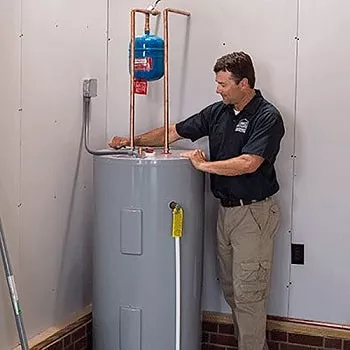Do It Yourself Hot Water Heater Setup: Necessary Actions for Success
When considering a DIY water heating unit setup, it is necessary to come close to the job with a methodical frame of mind, as the procedure includes several vital actions that can significantly impact both safety and security and efficiency. Choosing the appropriate water heating unit for your details demands is just the start; preparing the installment area and comprehending the required tools and products are just as crucial.
Choosing the Right Water Heater
When picking a hot water heater, it is necessary to consider a number of vital factors to guarantee ideal efficiency and effectiveness - water heater installation. Firstly, evaluate the kind of hot water heater that best matches your needs. Alternatives consist of tankless, tank, and warmth pump water heating units, each offering distinct benefits in terms of energy effectiveness and room demands
A larger household may call for a device with a better gallon capacity or a tankless system that can give constant warm water. Each power type has effects for installment costs and lasting power expenditures.
Energy efficiency is an additional important variable. By very carefully reviewing these variables, you can select a water heating unit that lines up with your home's specific requirements, ensuring comfort and performance for years to come.
Tools and Products Needed
Effectively mounting a hot water heater requires not just the appropriate selection of unit however also the appropriate devices and products. Prior to starting your DIY task, guarantee you have a thorough listing of items to facilitate a smooth setup procedure.
Essential devices include a monkey wrench, flexible pliers, and a screwdriver set (both flathead and Phillips), which will help you take care of numerous installations and links. In addition, a drill with appropriate little bits is required for mounting brackets or making any kind of called for openings. For security, a voltage tester is important, particularly when handling electric hot water heater.
You will certainly additionally require a flexible water supply line, which can be either knotted stainless steel or PVC, depending on your preferences and neighborhood codes. By gathering these materials and devices ahead of time, you set the phase for an effective water heater installment.
Preparing for Installment
Prior to starting the installation of your hot water heater, it is vital to evaluate the setup website to guarantee it meets all essential needs. Beginning by verifying that the area is well-ventilated, particularly for gas hot water heater, to avoid the buildup of harmful gases. Look for the availability of essential connections, including supply of water lines and electric outlets, ensuring they are in great condition and correctly located.

This proactive technique not only guarantees conformity with regional building codes yet also enhances the long life and performance of the water heater. Correct preparation establishes the stage for a smooth installation process and helps prevent unanticipated concerns.
Step-by-Step Installation Process
With the preparation total and all necessary assessments performed, the following stage includes the step-by-step installment of your water heater. Begin by ensuring that the new system is located properly, straightening it with the existing pipes and electric connections. For tank-type hot water heater, connect the cool water supply line to the inlet, generally marked in blue, and the warm water line to the outlet, typically marked in red. Use Teflon tape on threaded joints to avoid leakages (water heater installation).
Following, protect the temperature and stress safety valve, which is necessary for safety and security. Affix the discharge pipe to this valve, directing it in the direction of the flooring or a suitable water drainage area. For electric versions, connect the power supply by stripping the cables and safeguarding them to the heating unit's terminals according to the manufacturer's directions.
If you are installing a gas hot water heater, make certain the gas line is attached correctly and check for leakages making use of a soap option. Links are made, load the storage tank with water before transforming on the power or gas supply. Enable the water heater to get to the desired temperature level and check for any leaks around all links.
Ensuring Security and Efficiency
Consistently why not find out more guaranteeing security and performance throughout the installation and operation of your hot water heater is essential for optimum efficiency and longevity. Begin by choosing an ideal location that adheres to local building ordinance and gives adequate ventilation. Ensure that the location is without flammable products and has enough room for upkeep and evaluations.

After setup, conduct routine checks on the system to spot leakages, rust, or uncommon noises. Establish the thermostat to a secure temperature level, normally around 120 ° F, to stop scalding and boost power efficiency. Protect pipelines to reduce warmth loss, which adds to lower energy bills.
Verdict
In final thought, successful DIY water heating unit installment hinges on cautious preparation and implementation. Choosing the suitable water heater, preparing the installment location, and complying with an organized installation process are important steps.
When thinking about a DIY water heater installation, it is important to come close to the job with a systematic state of mind, as the process includes a number of important steps that can considerably affect both safety and security and performance.Prior to beginning the installation of your water heating unit, it is vital to examine the installation website to guarantee it satisfies all required demands. For tank-type water heaters, attach the cold water supply line to the inlet, usually marked in blue, and the hot water line to the outlet, normally designated in red.Routinely making sure safety and effectiveness during the installment and operation of your water heating system is crucial for ideal efficiency and long life. Choosing the proper water heating system, preparing the installation area, and following a systematic setup process are essential steps.